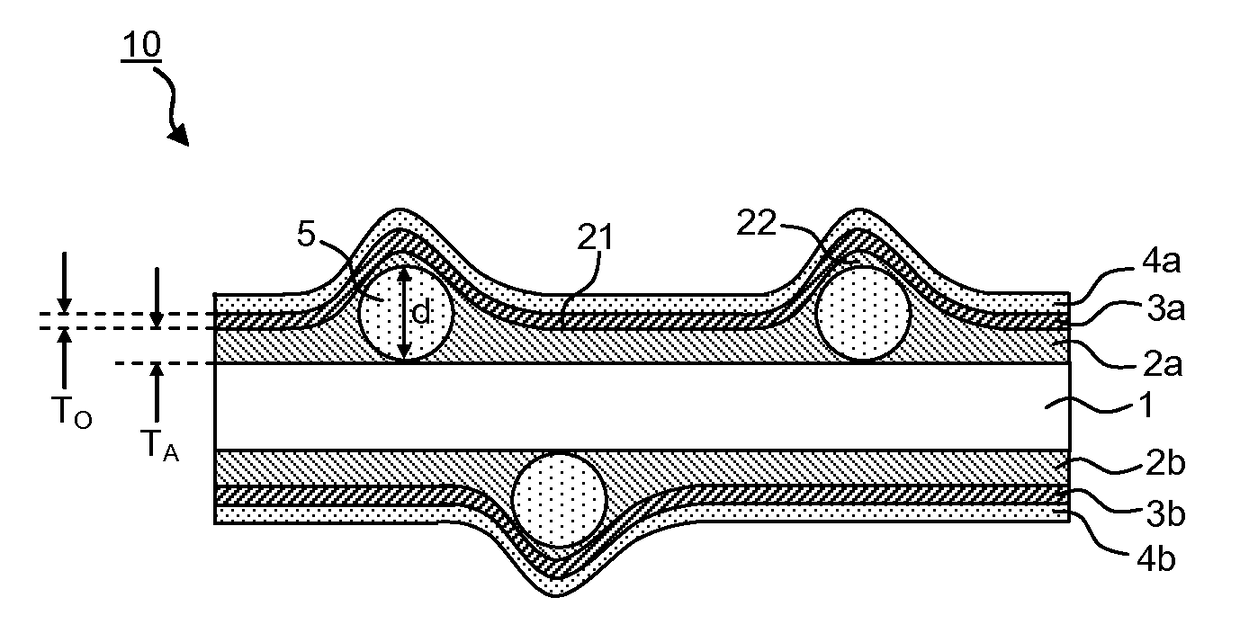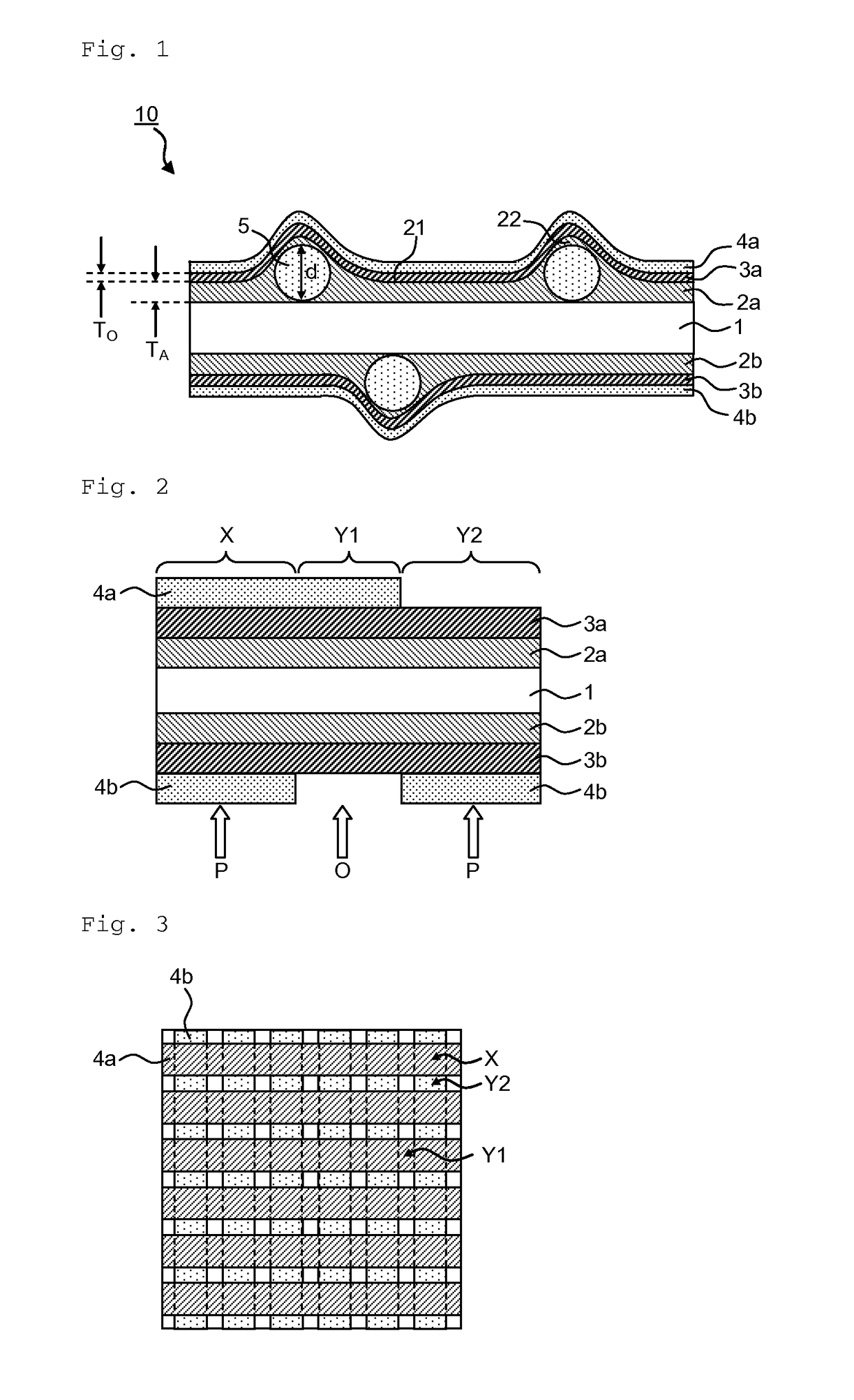Double-sided transparent conductive film and touch panel
a technology of transparent conductive film and touch panel, which is applied in the direction of instruments, non-metal conductors, non-insulated conductors, etc., can solve the problems of film breaking or scratching, affecting the adhesion of the transparent conductive layer 4, and reducing the productivity of the film, so as to improve the adhesion and reduce the glaringness. , the effect of improving the adhesion
- Summary
- Abstract
- Description
- Claims
- Application Information
AI Technical Summary
Benefits of technology
Problems solved by technology
Method used
Image
Examples
example 1
[0074]Prepared was a coating composition containing a plurality of mono-dispersible particles (manufactured by Soken Chemical Engineering Co., Ltd., trade name “SX-130H”) having a mode diameter of 1.3 μm, a binder resin (manufactured by DIC Corporation, trade name “UNIDIC RS29-120”), and ethyl acetate as a solvent. The addition amount of the particles was 0.2 parts based on 100 parts of the binder resin. Next, a gravure coater was used to apply the coating composition onto the both sides of a long base material film (manufactured by Nippon Zeon Co., Ltd., trade name “ZEONOA”) having a thickness of 100 μm in such a manner that the applied films would each have a thickness of 1.0 μm after dried. The workpiece was heated at 80° C. for 1 minute to dry the applied films. Thereafter, the workpiece was irradiated with ultraviolet rays giving a cumulative light quantity of 250 mJ / cm2 from a high-pressure mercury lamp to form anti-blocking layers.
[0075]Next, a gravure coater was used to appl...
example 2
[0078]A double-sided transparent conductive film was prepared in the same manner as in Example 1 except that monodisperse particles having a mode diameter of 1.5 μm (manufactured by SEKISUI PLASTICS CO., Ltd., trade name “XX-184AA”) were used as particles, and the added amount of the particles was 0.3 parts based on 100 parts of the binder resin.
example 3
[0079]A double-sided transparent conductive film was prepared in the same manner as in Example 1 except that monodisperse particles having a mode diameter of 1.9 μm (manufactured by Soken Chemical Engineering Co., Ltd., trade name “MX-180TA”) were used as particles, and the added amount of the particles was 0.2 parts based on 100 parts of the binder resin.
PUM
| Property | Measurement | Unit |
|---|---|---|
| thickness | aaaaa | aaaaa |
| reflectance | aaaaa | aaaaa |
| thickness | aaaaa | aaaaa |
Abstract
Description
Claims
Application Information
 Login to View More
Login to View More - R&D
- Intellectual Property
- Life Sciences
- Materials
- Tech Scout
- Unparalleled Data Quality
- Higher Quality Content
- 60% Fewer Hallucinations
Browse by: Latest US Patents, China's latest patents, Technical Efficacy Thesaurus, Application Domain, Technology Topic, Popular Technical Reports.
© 2025 PatSnap. All rights reserved.Legal|Privacy policy|Modern Slavery Act Transparency Statement|Sitemap|About US| Contact US: help@patsnap.com


